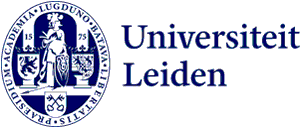
Passenger safety at risk due to poor labour relations for airline pilots and crew
Due to gaps in working conditions regulations, airline pilots and crew are suffering from fatigue and inadequate protection in general. Leiden PhD student Yuran Shi investigated how international law can help improve working conditions and safety in the aviation sector.
In the rapidly evolving and volatile world of aviation, workers' labour relations are also undergoing changes. ‘This has brought about a hybrid, complex landscape of labour relations,’ says Yuran Shi, whose PhD research looks at the regulation of labour relations for pilots and other workers serving in the international aviation sector. Labour relations in this sector are very complex due to factors such as forum shopping, atypical employment and a weakened position of labour unions. Legal gaps even exist in the rules for labour regulation of airline staff, which aggravate the issue of workers having a weaker bargaining position compared to the airlines. This has a negative impact on crew management and working conditions.
Yellow dog contracts
A typical example of that deterioration in labour rights are so-called ‘yellow dog contracts’, says Yuran Shi; an issue once occurring at Ryanair. This low-cost carrier once retrained pilots to convert from Boeing 737-200 to 737-800 aircraft. The airline sought to impose a condition in pilots’ employment contracts stating that if the company were compelled to engage in collective bargaining with any pilot association or trade union within five years of the conversion training, the pilot would have to repay the full training cost of €15,000.
Yuran Shi: ‘Such a contractual repayment arrangement could be an indicator of “yellow dog contracts” where, as a precondition to being hired or maintaining employee status, the worker agrees not to join a labour union or act in collaboration with other employees.’
Yuran Shi discovered that current international labour standards and international air law fall short of effectively addressing these gaps in the regulation of working conditions. ‘Although the Comprehensive Air Transport Agreements (CATAs) – in the context of international air law –present a potential solution with provisions on labour, their impact is limited by ambiguities and a lack of enforceability.’
Inadequate protection
Examples of unfavourable employment relations and working conditions highlight the inadequate protection of airline workers, says Yuran Shi. ‘While the civil aviation industry is international by nature, labour and social security laws primarily fall under domestic arrangements. The multi-jurisdictional aspects of employment relations pose various challenges concerning workers’ labour standards. Specifically, cost-cutting techniques are increasingly aligned with workforce casualisation in the aviation industry, where airlines substitute open-ended contracts with atypical employment contracts.’
Passenger safety at stake
These unfavourable employment relations also affect aviation and passenger safety. Pilot fatigue is a crucial factor in evaluating an employee’s fitness for duty. As noted by the European Cockpit Association (ECA), approximately 50% of surveyed pilots of community carriers reported involuntarily falling asleep in the cockpit or experiencing episodes of microsleep. In addition, almost 80% of fatigued pilots did not file a fatigue report or consider themselves unfit to fly. Shortcomings in current technical standards, at the European level, contribute to pilot fatigue.

Absence of labour competition
Yuran Shi’s research primarily examines the labour standards that apply to airline workers, including crew members – particularly pilots – who work on board aircraft, as well as ground staff.
In the aviation sector, the legal side of labour relations is very complex for airline workers. One of the contributing factors is the absence of competition in the aviation labour market. Yuran: ‘The concept of an aviation labour market hinges on a specific geographic area where workers can move freely between different airlines without encountering regulatory barriers related to licensing, flight documents, taxes and social security benefits. Generally, each aviation labour market only has a few airline buyers, given the substantial investment required in aircraft, personnel and infrastructure for the airline business. The aviation labour market is typically marked by a lack of competition, which makes it challenging for workers to secure access to higher wages. As a result, these workers find themselves in a vulnerable position on the labour market, possessing weaker bargaining powers compared to the airlines when it comes to employment relationships.’
The aviation industry as a research area
Yuran Shi is a graduate of the Advanced LL.M. in Air and Space Law at Leiden University. During his studies, he gained both theoretical and practical knowledge of air and space law. Yuran: ‘We had the privilege of enjoying study trips to organisations like KLM and the International Court of Justice. These incredible experiences exceeded my expectations and strengthened my desire to build an academic career in the field of air law.’
Yuran Shi is fascinated by the aviation industry. ‘At the end of the day, individuals working in the various aviation sectors support the safe and sustainable development of the civil aviation industry. The air transport industry is a major employer due to its extensive reach and strong links with affiliated sectors, such as tourism, catering companies and clothing suppliers.’
Yuran will defend his PhD on Tuesday 12 November. The title of his research is: ‘Labour protection for airline workers: a comparative analysis of the regimes in the EU States, the US and China.’
Text: Jan Willem Oomen
Images: Unsplash+
